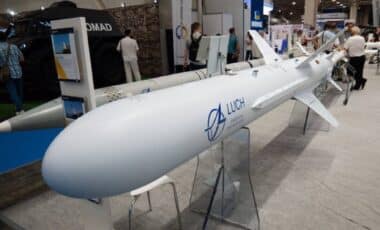Elon Musk has fired Omead Afshar, Tesla’s head of operations in North America and Europe, as the company grapples with falling sales in these key regions. Afshar, who had been a prominent figure within Tesla since joining the company in 2017, was overseeing operations when the electric vehicle manufacturer saw a significant drop in its market performance. This move comes as Tesla faces challenges, including a continued sales slump and increased competition, particularly in China.
Afshar’s dismissal is another blow to Tesla, which has seen its electric vehicle sales decline for five consecutive months in Europe, and U.S. sales are also on the decline this year. Tesla’s top market, China, experienced a 15% sales drop in May, compounding the difficulties faced by the company. Analysts predict a global decline of at least 10% in Tesla’s deliveries by the end of the second quarter, reports Forbes.
Iran’s Hypersonic Fattah Missile Just Did the One Thing Israel Feared Most
A Rising Star at Tesla
Omead Afshar joined Tesla as an engineer in 2017 and quickly rose through the ranks, eventually becoming one of Musk’s top lieutenants. By October 2024, Afshar was appointed vice president overseeing Tesla’s operations in North America and Europe.
He had been widely regarded as one of the most powerful executives within the company, as reported by the Wall Street Journal in a profile last November. His leadership was marked by a focus on expanding Tesla’s presence in these critical markets, but the company’s struggles over the past year have overshadowed his efforts.
Afshar’s departure comes just days before the end of Tesla’s second quarter. According to multiple sources, this timing aligns with ongoing concerns about the company’s future performance, especially after Tesla’s sales slump in Europe and other regions. His removal signals potential shifts in Tesla’s strategy as it seeks to address its declining sales figures.
Tesla’s Struggling Sales in Key Markets
Tesla’s operations in Europe and North America have become increasingly difficult. The company has faced sustained drops in EV sales in Europe, with the latest data showing a fifth consecutive month of declining deliveries. In the U.S., sales have similarly fallen, raising questions about Tesla’s ability to maintain its dominance in these vital markets. Even Tesla’s largest market, China, has seen a significant decline in sales, with a reported 15% drop in May.
According to analysts, Tesla is expected to deliver around 392,800 EVs in the second quarter of 2025, down from 443,956 units in the same period the previous year. The company has already faced considerable pressure due to its struggles with competition, particularly from rising Chinese rivals who have been eating into Tesla’s market share. This shift in the competitive landscape has prompted questions about how Tesla will adjust its strategies to regain its footing.
Tesla’s Shift Toward New Technologies
Despite the ongoing challenges with its EV sales, Tesla is increasingly shifting its focus toward emerging technologies, such as robotaxis, humanoid robots, and artificial intelligence. Musk has pushed for this pivot as a way to secure Tesla’s future, even as the core business faces difficulties.
However, the company’s recent foray into robotaxis has been underwhelming. Tesla launched a pilot version of its robotaxi service in Austin, Texas, on June 22, 2025, but the service has so far shown signs of instability. According to reports, several incidents were flagged for erratic behavior by the test vehicles, and the National Highway Traffic Safety Administration is reviewing the situations.
Despite these setbacks, Afshar had been an enthusiastic supporter of Tesla’s new direction. In a post on June 23, he celebrated the robotaxi launch as a “historic day for Tesla,” crediting the efforts of the company’s workforce. However, with his departure and Tesla’s ongoing challenges in its primary business areas, it remains unclear whether this bold shift will be enough to turn around the company’s fortunes in the face of intensifying competition and internal restructuring.








